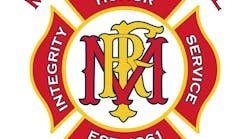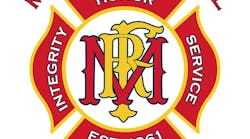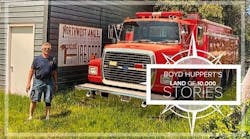Volunteer fire departments continue to face recruitment and retention challenges. The world has changed, and our lives as volunteers and the lives of potential recruits have changed, too. What hasn’t changed is that members of communities expect their local volunteer fire department to muster an appropriate response to their emergency—real or perceived.
Much has been written and said on this topic, but the bottom line is that all volunteer departments need more volunteers—and they need to draw qualified and highly motivated candidates from as many pools of potential recruits as possible.
Diversity, Equity & Inclusion (DEI) has become an important part of the corporate hiring and human resources philosophy to build a workforce that welcomes all, treats everyone equally, and represents the best people and talent that’s available. To grow the volunteer fire service while also retaining current members, the key to succeeding is being an organization that’s inclusive.
What is inclusive?
In “Cornerstones of Leadership: On and Off the Fireground” (First Responder Publishing), Frank Leeb, who is a deputy assistant chief in FDNY, wrote, “An inclusive mindset enhances performance and strengthens the team.”
What is meant by being inclusive?
When we refer to diversity of candidates and members, we should consider a broad definition. Diversity in the corporate world often focuses on broadening outreach and hiring along racial, ethnic, gender, sexual preference and other lines. However, when we look for diverse candidates for volunteer departments, we also must be open-minded about age, geography, social circles, work schedules, availability and a variety of other day-to-day factors. All must be welcome, assuming that they meet standards and can contribute to the mission. Often, the diversity of work schedules, family situations and geography can work to an organization’s advantage.
Volunteer departments must review their needs and adopt modern definitions of what they need from new and current members. Attracting a broad, diverse pool of recruits is critical. Departments must make those who join the ranks feel included and valued from Day 1. Departments should look at ways for more people tobe successful and productive members. This inclusion is crucial to the future of the volunteer fire service.
Older probies
In my department, we saw two significant trends in the makeup of our candidate pool since the early 2000s. By being inclusive and by welcoming folks from backgrounds and experiences that are different from traditional applicants, we gained very valuable members and have sustained our overall membership levels. (Don’t get me wrong: We still need more new members.)
The first trend came almost 20 years ago, when we had a very significant uptick in people who joined our department in their late 30s, 40s and 50s. This was a new phenomenon for us. These probies weren’t typical new recruits. They came with several valuable assets that traditional probies who are in their late teens and early 20s don’t have yet, including significant life and work experience and a different perspective on things, as well as personal responsibilities, such as careers and families.
Our department worked to ensure that these new members felt included. We also made it clear that, as probies, they were at the start of their fire department career and would be called on to perform junior-member duties, regardless of their stature and accomplishments outside of the four walls of the firehouse.
It can be a delicate balance, but almost 20 years later, a number of these members still are with us and active.
We use members who are in these age groups to reach out to their friends and neighbors who are similarly situated to recruit those people to join us.
Reaching nontraditional candidates
The second significant trend that we witnessed was a bit slower to develop but peaked in the past few years.
When I joined my department, its membership was rather homogenous: Almost everyone traced their family tree back to the traditional countries whose citizens immigrated to the United States in the late 19th and early 20th centuries.
In the early 2000s, our community began to change. Asian Americans and recent Asian immigrants were moving into our community steadily, seeking a suburban lifestyle that included a very strong school system.
In 2000, about 10 percent of our community was of Asian or Indian descent. However, these new residents didn’t understand the service that their local volunteer fire department provided, let alone the fact that they could become a volunteer firefighter.
We had a lot of work to do to educate these folks, most of whom moved from New York City, where they were accustomed to a paid fire department.
We sent quarterly newsletters. Each included a profile of a member of the department who had a different story to tell (e.g., a pair of brothers, multigenerational fire department families, a stay-at-home parent whose children were off to college, female members and members of nontraditional fire service ethnic groups).
Over the years, we changed with the times and moved our recruitment messaging to social media, and we continue to use out-of-home advertising. About 18 years ago, a curious first-generation, Korean-American, recent high school graduate inquired about joining the department, and several months later, the department had its first member of Asian descent.
Eventually, more members of the Asian and, eventually, Indian communities in our town applied to the department.
Over the years, we greatly expanded the number of members that we gained from these ethnic groups through overall community education/recruitment and with some targeted outreach to nontraditional groups. For example, one of the EMTs who is an immigrant from China invited our chief to be the guest speaker at the local Chinese-American Society.
As an organization, we worked to accept cultural differences in our new membership groups. For instance, some new members live in multigenerational households and care for both their children and their parents while they still work and volunteer.
We also worked with a group of probies who were going to the fire or EMS academy whose primary language wasn’t English.
Gladly received
Over the past 20 years, the aforementioned groups have grown dramatically in terms of the percentage of our community’s population—thus, expanding our candidate pool. (In the 2020 Census, our community reported at 30 percent Asian. Today, about 20 percent of our 115 members are of Asian or Indian origin.)
In the early 2010s, the Firefighters Association of the State of New York received a significant SAFER Grant to recruit new volunteers across the state. Early in the process, we convened a focus group of about a dozen volunteer firefighters from across upstate New York. All of them had fewer than five years in the fire service.
One of the points that these firefighters agreed on was that once they were sworn into their department, most didn’t feel welcome. They felt left out by cliques or established social circles within their firehouse. Many of the veteran members didn’t want to talk to “the new people.”
If we want to begin to grow the volunteer fire service again, we must seek diverse candidates, and we must be inclusive, both with new recruits and current members.






